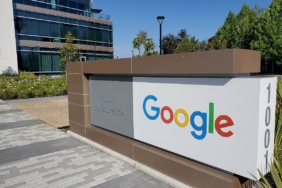The year 2024 emerged as a pivotal period in the evolution of artificial intelligence (AI), building upon the generative AI momentum established in 2023. AI, which initially captured attention through interactive chatbots, has now evolved to drive significant applications across major technological platforms. This transformation includes novel use cases in music and video generation, alongside enhanced automated functionalities. Contrary to skeptical predictions, the anticipated decline of the AI bubble did not materialize.
This year was characterized by significant advancements in large language models (LLMs) with a focus on sophisticated reasoning, the inception of AI PCs dubbed Copilot+ PCs, and a marked proliferation of innovations in the open-source AI sector. Key developments that shaped the AI landscape throughout 2024 are highlighted below.
OpenAI’s High-Performance AI Models
OpenAI, the pioneer of the generative AI movement with its Generative Pre-trained Transformer (GPT) architecture, continued to dominate the field. With tech giants such as Google, Microsoft, Meta, and Amazon entering the arena, competition became fierce for achieving top benchmark scores.
The company kicked off the year with the release of the reasoning-focused GPT-4o AI model in May, shortly followed by GPT-4o Mini in July. As the year closed, OpenAI launched the full version of the o1 model and the eagerly awaited text-to-video model, Sora.
Alongside these initiatives, OpenAI unveiled its Advanced Voice Mode with Vision for the ChatGPT app, enhancing user interaction. A new search engine, ChatGPT Search, was also embedded within the chatbot platform.
A notable highlight for OpenAI was its partnership with Apple, which integrated ChatGPT into Apple’s suite of intelligence tools. Following this collaboration, a dedicated ChatGPT app for macOS and Windows was introduced.
Google’s Expansive AI Portfolio
Google made significant strides in AI with multiple model releases throughout the year. In February, the company debuted the Gemini 1.5 series, which included the Gemini 1.5 Pro boasting one trillion parameters. By December, Google released the Gemini 2.0 series, featuring the Flash model available in preview, alongside a more advanced variant for paying subscribers.
Additionally, Google DeepMind launched the Imagen 3 image generation model, the Veo 2 video generation model, and previewed its music-generating AI, MusicLM. The introduction of NotebookLM, which processes extensive documents and generates engaging podcasts, further exemplified Google’s innovative approach.
The Gemini framework saw enhancements too, such as the addition of Gemini Live, a two-way voice communication feature, and the integration of the Gemini AI assistant across most Google Workspace applications, including Gmail and Docs.
Meta, while traditionally synonymous with social media, expanded its capabilities in 2024 with the development and release of several small language models (SLMs), many offered as open source.
The company rolled out various models in its Large Language Model Meta AI (Llama) series, including 70B and 30B coding-focused models and the notable Llama 3.1 with 405 billion parameters. The initiative drawing the most attention was the expansion of Meta AI as a feature across Facebook Messenger, Instagram, and WhatsApp, with global availability achieved by September.
Microsoft’s Copilot+ PC Revolution
While leveraging OpenAI’s models, Microsoft established its own niche in the AI-driven PC market. Forming partnerships with Snapdragon, Intel, and AMD, the tech titan launched the AI PC initiative which required a dedicated Copilot button on keyboards, marking the dawn of Copilot+ PCs, integrating native chatbot functionalities into Windows-based devices.
Beyond expanding its chatbot interface, Microsoft introduced Copilot tools within the Microsoft 365 suite, enhancing the chatbot’s features with voice and vision capabilities. Additionally, a beta version of the AI-powered Recall feature was rolled out, allowing users to inquire about previous device activities.
Amazon’s Strategic Aggregation in AI
Critics noted Amazon’s late entry into the AI sector, yet the company positioned itself as an aggregator rather than a competitor in 2024. While standout releases were limited, Amazon introduced the Rufus AI tool within its app to aid shopping and unveiled the Titan series of AI models along with a video generation model designed for enterprise applications.
Simultaneously, Amazon focused on incorporating various third-party AI models into its Amazon Web Services (AWS) platform. Investments were made in developing AI tools aimed at enhancing response efficiency and minimizing inaccuracies in outputs. The tech giant also upgraded its server capabilities to support high-volume AI processing.
Additional Noteworthy AI Developments
Amidst major players, smaller firms also made an impact in the AI realm. Anthropic continued to build on its success with the Claude series, launching Claude 3 early in the year and Claude 3.5 later. It also introduced desktop applications for Mac and Windows, along with standalone apps for Android and iOS, while enhancing Claude’s capabilities in tool usage and PDF comprehension.
Perplexity, an AI-driven search engine, rolled out a Pro mode for detailed complex queries and launched a Mac standalone app. However, the introduction of advertising for premium subscribers drew some backlash.
Mistral sustained its commitment to open-source models, debuting the 8x22B Mixture of Experts (MoE) and the Mixtral Open 2 LLM, alongside the innovative Pixtral 12B AI model with computer vision functionalities.
Looking Ahead to AI in 2025
Summarizing the key AI announcements of 2024, it is evident that this sector remains a dynamic force within the technology landscape. As we approach 2025, expectations are high for another year filled with advancements.
Next year may witness the ascent of agentic AI, enhancing functionalities across various platforms and devices. Envision chatbots that can autonomously book movie tickets or procure items at optimal prices, executing tasks without user intervention—this is the promise of AI agents.
Furthermore, improvements in chatbot memory functions are anticipated, moving beyond basic retrieval techniques to provide users with more robust assistance. Enhanced real-time video processing capabilities may become widely accessible as well. Additionally, significant advancements in AI adoption are expected in India throughout 2025.






